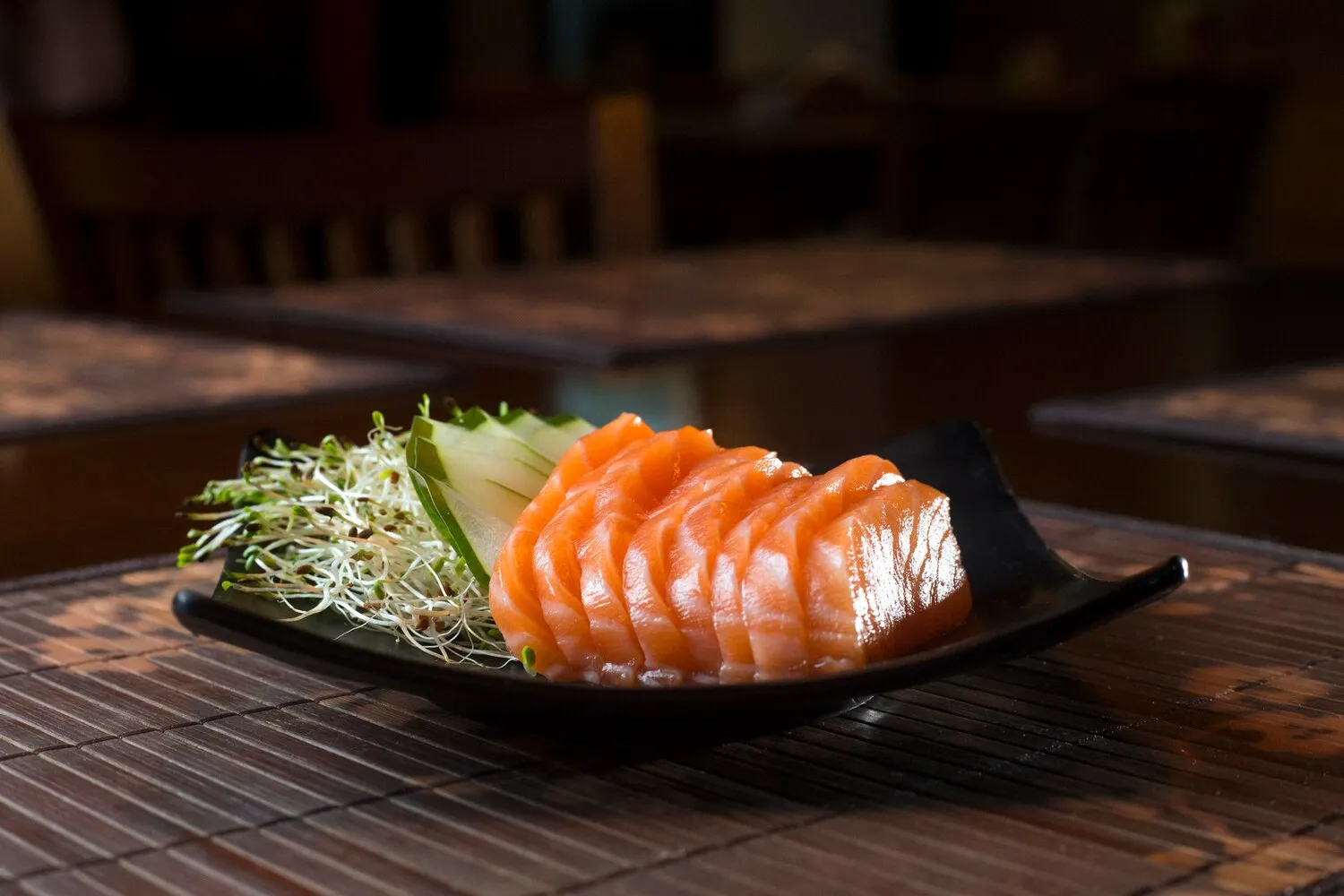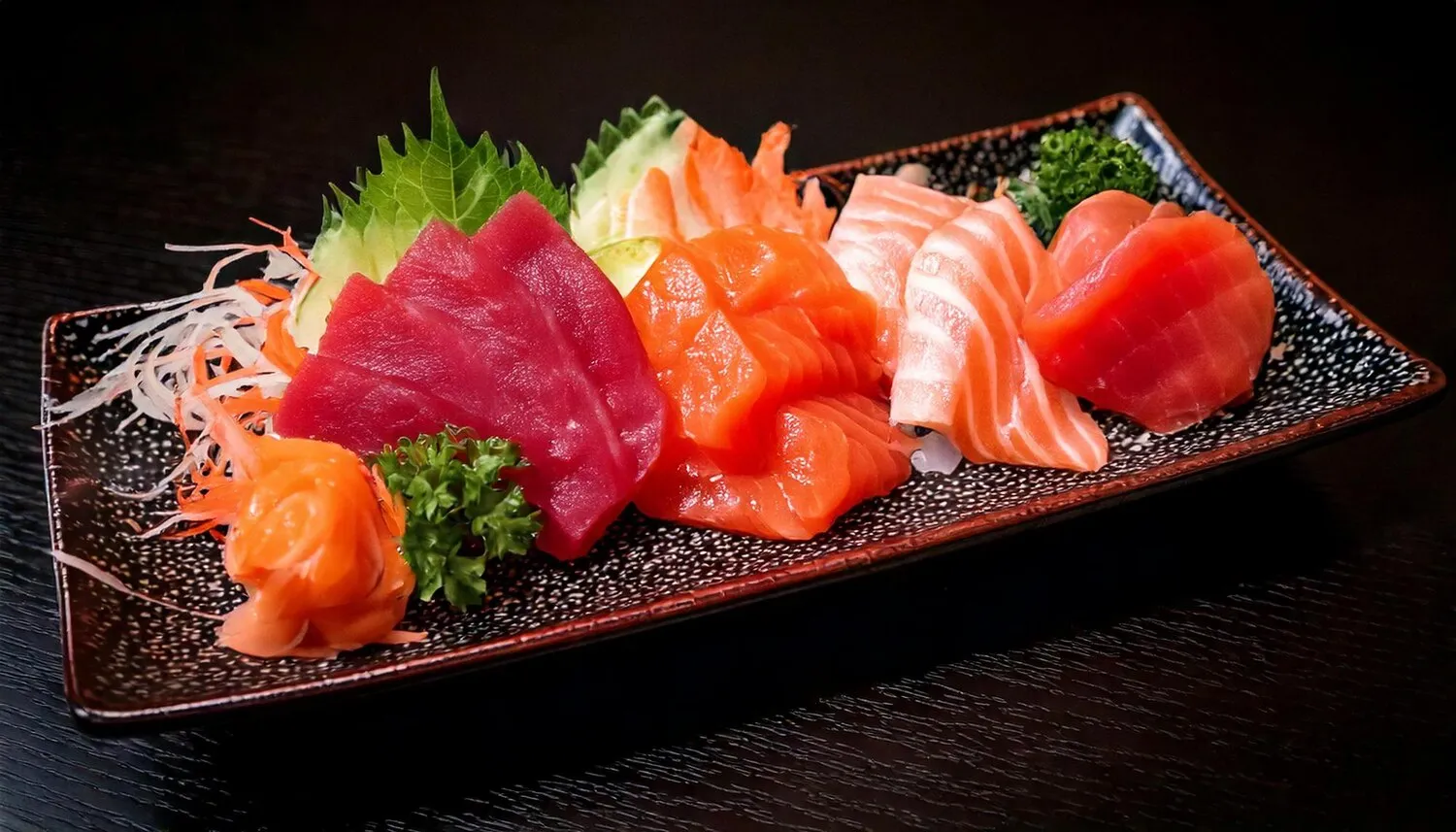
Assorted Sashimi
Various types of fresh, thinly sliced raw fish. According to customer reviews, the sashimi is very fresh and high quality.
Nutrition Facts
* The % Daily Value (DV) tells you how much a nutrient in a serving of food contributes to a daily diet. 2,000 calories a day is used for general nutrition advice.
Sashimi's origins can be traced back to ancient Japan, where the need to differentiate raw fish from cooked fish led to its careful preparation and presentation. Initially, it was reserved for the elite due to the cost and scarcity of fresh fish. Over time, improved fishing techniques and refrigeration allowed it to become more widely accessible, evolving into the refined culinary art we know today.
Sashimi is deeply ingrained in Japanese culinary culture, representing respect for the ingredients and the art of simplicity. It symbolizes freshness, quality, and the connection to the ocean.
Ingredient Sourcing
The quality and freshness of the fish are considered paramount. Chefs often develop close relationships with fishermen to ensure access to the best possible seafood.
Presentation
The arrangement of sashimi on the plate is an art form, reflecting seasonality and aesthetic balance. The placement of each slice is carefully considered to enhance the visual appeal.
Respect for the Fish
Sashimi embodies a deep respect for the ingredients and the process of preparing them. It reflects a connection to nature and the importance of sustainable fishing practices.
Sashimi emphasizes the pure, delicate flavors of fresh seafood. The taste is clean, subtle, and varies significantly depending on the type of fish.
The flavor profile ranges from the buttery richness of toro (fatty tuna) and salmon to the mild, slightly sweet taste of tai (sea bream) or the firm, clean flavor of hamachi (yellowtail). Soy sauce and wasabi enhance these natural flavors without overpowering them, providing a salty and spicy counterpoint. Ginger offers a palate-cleansing element, preparing the taste buds for the next delicate slice.
Soy Sauce Usage
Avoid drowning the sashimi in soy sauce. Instead, lightly dip each piece to enhance, not mask, the flavor of the fish. Use the ginger to cleanse your palate between different types of sashimi.
Wasabi Application
Apply a small amount of wasabi directly to the fish rather than mixing it into the soy sauce. This allows you to control the level of spice and preserves the integrity of the wasabi flavor.
Eating Order
Start with the milder-flavored fish first and progress to the richer, more flavorful types. This allows you to appreciate the subtleties of each variety.
Explore additional Sashimi dishes and restaurants
Explore SashimiDiscover top dining spots and culinary experiences in Chestermere.
Explore ChestermereLearn more about the food culture, restaurant scene, and culinary heritage of Canada.
Explore Canada
